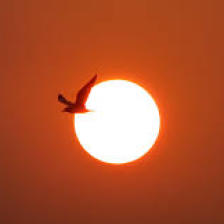By James Zheng
The birth of the ARPANET is attributed to the start of the Cold War. The original purpose of ARPANET (the Advanced Research Projects Agency Network) was military. Computers were the intended intermediary for military communication.
One of the most important figures in computer science, J.C.R. Licklider, formulated the earliest ideas of a global computer network in August 1962 in a series of memos discussing the “Intergalactic Computer Network” concept. These ideas contained almost everything that the Internet is today, including cloud computing.
When J.C.R. Licklider left office, he handed over the baton to Bob Taylor. Taylor graduated from the University of Texas, majoring in experimental psychology, and his adoration of Licklider reached a point of no return.
One day in 1966, when Taylor walked into the Charles Herzfeld’s office, who was the Head of the ARPA, he proposed his idea of the Internet to Herzfeld. The blueprint of ARPANET was formally established.
Here came another guy who was a genius from MIT, Larry Roberts. Taylor put his whole expectation on Roberts, and Roberts rapidly constructed the fundamental structure for the ARPANET. In not even a year, Roberts put the goal forward: a multi-computer network with communication between computers.
But, the first two things Roberts and Taylor planned were 1) arrange at least sixteen work groups participating in this research and use at least thirty-five computers, and, 2) make these computers deliver messages to each other every day, and the amount of messages has to be at least five hundred thousand.
With the objective out there, Roberts submitted another report called “the network which could share the information.” The report mainly advocated utilizing the four trending computer prototypes to set up the experimental nodes. These prototypes were Sigma-7, IBM360, PDP-10 and XDS-940, but the question came again: how do you enable these computers to communicate with each other?
At this moment, another savior arrived named Wesley Clark. Clark told Taylor and Roberts that they didn’t need to connect all the computers to the network. They just needed to install an intermediary computer between the host providing the resources and the network. The task of this intermediary computer only involved three things: to receive the remote information, to convert it to the format that could be used by the local computer, and to make sure computers are always connected. Do you feel you know this intermediary computer? You should; it was the predecessor of the router!
When the four computer prototypes finished setting up, the first ARPANET link was established between the University of California at Los Angeles (UCLA) and the Stanford Research Institute at 22:30 on October 29, 1969.
“We set up a telephone connection between us and the guys at SRI,” researcher Kleinrock said in an interview: “We typed the L and we asked on the phone, ‘Do you see the L?’
’Yes, we see the L,’ came the response.
We typed the O, and we asked, ‘Do you see the O.’
‘Yes, we see the O.’
Then we typed the G, and the system crashed …
Yet a revolution had begun.”
By December 5, 1969, a 4-node network was connected by adding the University of Utah and the University of California at Santa Barbara. ARPANET grew rapidly. By 1981, the number of hosts had grown to 213, with a new host being added approximately every twenty days.
ARPANET became the technical core of what would become the Internet, and a primary tool in developing the technologies used today.
Source:
1960s Editor: Quintus Ni



